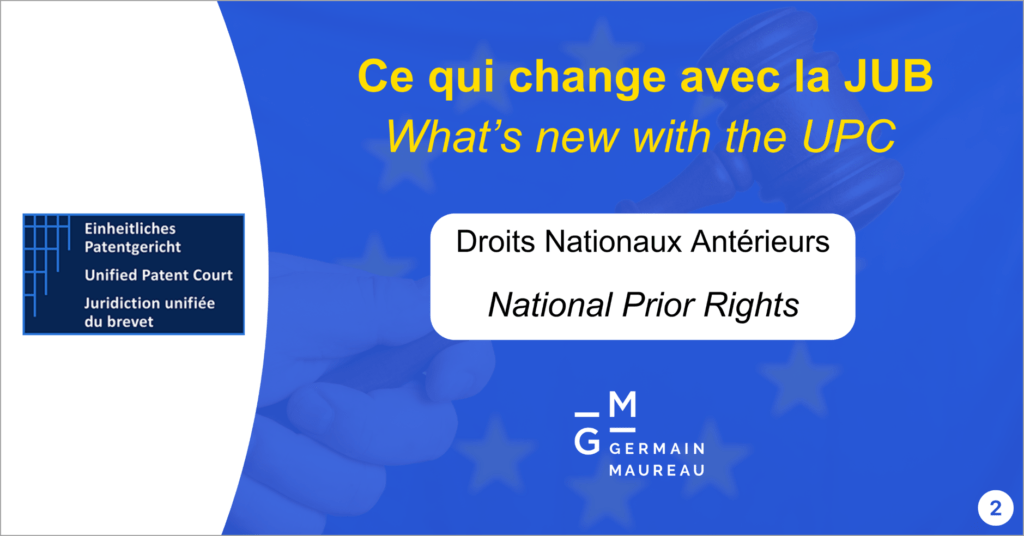National Prior Rights, what’s new with the UPC
[26/07/2023]

On 1 June 2023, the entry into force of the Agreement on a Unified Patent Jurisdiction (UPCA) finally implemented the Unified Patent Court (UPC) and the Unitary Patent (UP).
In the Member States of the UPC Agreement, applicants must now choose whether to request the unitary effect after the grant of a European patent, or to remain in the traditional system of state-by-state validation. Numerous strategic factors affect this choice: cost, territories of interest, translations, strength of the patent, etc.
However, applicants are not always aware of another factor that could become critical in this choice: the possible existence of national prior rights.
These rights are national patent applications from European states with a priority date prior to that of the European patent in question, but whose publication date is later than the priority date of that European patent.
National prior rights do thus not form part of the state of the art under Article 54(2) EPC (since they were published after the priority date of the European patent in question), nor do they form part of the state of the art under Article 54(3) EPC (since they are not European applications). Consequently, the European Patent Office (EPO) does not take them into account during the examination: the existence of a relevant national prior right does not preclude the grant of a European patent.
However, national prior rights have effects at national level, which are determined by the relevant national legislative provisions.
For example, a French national prior right can be enforceable against the French part of a classic European patent under Article L611-11 of the Intellectual Property Code, 3rd paragraph.
In practice, if a national prior right is identified during the grant procedure, the applicant can bring this national prior right to the attention of the EPO by providing a specific set of claims for that State, or even by withdrawing the designation of that State. It is also possible, after the grant, to apply for a national limitation.
In the absence of a specific set of claims, a national prior right that has been disregarded may in the worst case result in the invalidity of the sole national fraction concerned; hence, the issue of national prior rights is widely ignored for classic European patents.
Nevertheless, things become much more problematic in the case of a Unitary Patent:
- Article 3(1) of Regulation (EU) No 1257/2012 implementing enhanced cooperation in the area of the creation of unitary patent protection states that “A European patent granted with different sets of claims for different participating Member States shall not benefit from unitary effect.“
For example, it is not possible to provide a different set of claims for the State in question if the unitary effect is desired, and only a global limitation would be possible, which would unnecessarily reduce the scope compared with a classic European patent.
- In the event of an action before the UPC relating to an Unitary Patent, Article 62(2) of the UPC Agreement expressly provides for the possibility of revoking the patent on the basis of earlier national law, and Article 3(2) of Regulation No 1257/2012 states that a European patent with unitary effect “may be limited, transferred, revoked or lapse only in respect of all participating Member States“.
As a result, there is a risk of partial or even total invalidity for all the States participating in the UPC agreement, and not just that of the previous national law.
It should be recalled that the EPO indicates for information purposes the possible existence of national prior rights when notifying an intention to grant under Rule 71(3) EPC.
Consequently, if a national prior right is notified, it should be studied carefully whether the unitary effect was desired. And, if this national prior right was indeed relevant to the claims of the European patent, it might be relevant not to request the unitary effect and rather to proceed with traditional validations.
Our teams are available for any further information.
